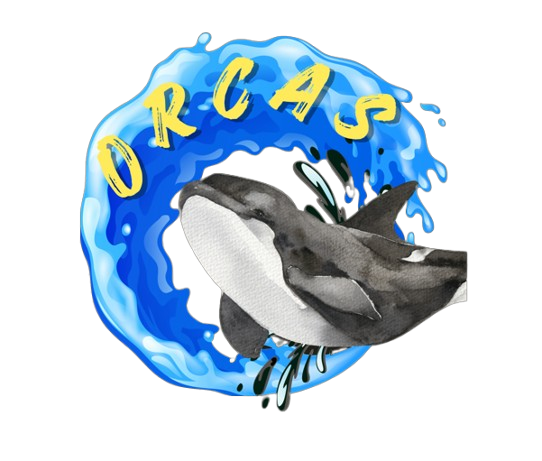How It Works
ORCAS functions as a robotic ocean vacuum that automatically maps, navigates, and cleans oil spills. It uses machine learning and sensor technology to scan the water and locate oil slicks.
Guided by AI, it moves towards the spill and activates a suction mechanism to collect the oil. Inside, the oil is filtered using layers of coconut husk and mica powder; coconut absorbs oil while mica repels water,
allowing for efficient and eco-friendly separation. A central control system makes real-time decisions, adjusting operations based on wave conditions, oil density, and currents, enabling reliable operation with minimal
human input.
Design & Development Process
The process began with the goal of creating a safer, smarter way to handle oil spills. Current technologies were studied and consultations held with marine engineers and AI specialists from the Philippines and Japan. Prototypes were built to test filter materials, with lab tests showing superior oil-absorbing properties from coconut husk combined with mica. Water sensors, AI-driven mapping systems, and an initial pathfinding algorithm called 'Predicted First Left' were added. Using Arduino and vacuum prototypes, ocean conditions were simulated in controlled tanks. Field testing followed in a simulated sea setup with waves, wind, and various oil types. Expert feedback was used to improve efficiency, speed, and responsiveness.
Technical Specifications
ORCAS features a modular design that can be adapted to different marine environments and oil spill scenarios. The robot integrates sensor technology for real-time environmental monitoring, AI-powered navigation for autonomous operation, and a sophisticated filtration system using biodegradable materials. The system's central control unit processes data from multiple sensors to optimize cleanup operations continuously.
Modular Design
Adaptable to various marine environments and oil types
Sensor Array
Real-time environmental monitoring and oil detection
AI Navigation
Autonomous pathfinding with "Predicted First Left" algorithm
Bio-Filtration
Coconut husk and mica-based sustainable filtration system
Testing & Results
Laboratory and field testing have demonstrated ORCAS's exceptional performance. In controlled simulations with various oil types and marine conditions, the system achieved over 57% oil recovery rates. The coconut-mica filter prototype showed remarkable oil absorption capabilities while maintaining structural integrity. Testing at simulated sea conditions validated the robot's ability to navigate autonomously and adapt to changing environmental factors.
